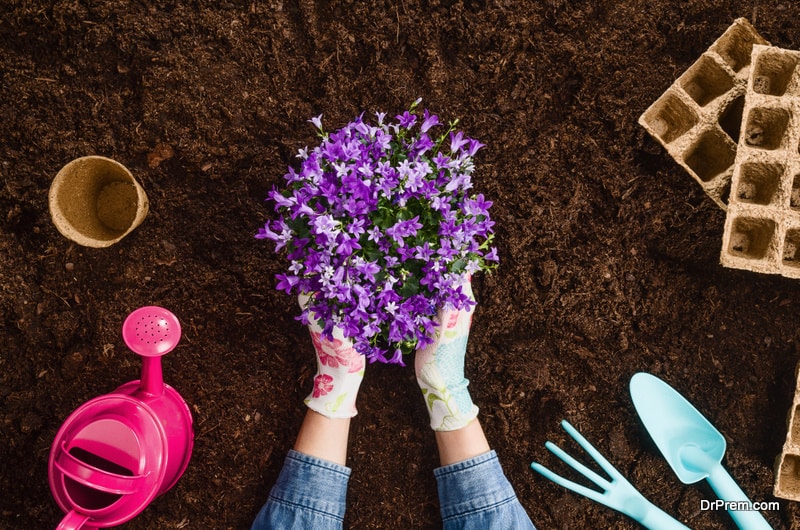If you want to raise healthy flowers and vegetables in your garden then the most important thing is the soil. You will only be able to know whether soil has all the ingredients as required by doing a soil test. By assessing soil quality, you will be able to take necessary steps in case of any deficiencies.
How to Assess your Soil
Check Soil Composition:
Put about 4 inches of soil in a jar, fill water up to the brim, put on the lid and shake well. After that, keep the jar aside for about 1 day for it to settle down properly and you will see visible layers of components of the soil. You will find sand is right at the bottom, followed by silt, clay and there will be organic matter on top. Ideally, there should be about forty-five percent sand, twenty-five percent of silt as well as clay and five percent organic matter.
In case sand content in the soil is more than sixty percent then there will be problems in keeping the garden properly watered as well as nourished. In this situation, you will have to add more of organic matter like manure and compost. On the other hand, if sand percentage is less the forty then roots of plants may find it difficult to penetrate properly. In this case, you can add extra organic matter to soil.
Test Soil Compaction:
Take a metal wire of about two foot height and plunge it vertically into garden bed which is not tilled. If the wire stops going any deeper or bends, then take it out and check the length of wire that easily went into the ground. In case, the wire penetration was about a foot or higher then roots will not have any problem with expansion in the soil.
If wire did not go in that deep then it means clay content in the soil is rather high and roots will have problem in spreading properly. Tilling as well as aerating using compost or coconut coir are some of the solutions you will have to implement.
Check Drainage:
Make a cubic hole in the ground, which is twelve inches deep and wide. Fill water up to neck in this hole and let it get completely empty and fill it again for second time. Notice the time it takes now for the hole to get empty this time. If you find that it took less than 2 hours for the hole to empty then it means that the soil is getting drained too quickly and plants will have problem if not watered frequently.
Soil would be able to retain water if organic matter is added to it. On the other hand, if there is water still in the hole even after six hours pass then it indicates that water is draining very slowly. Adding organic material and using raised garden beds are some of the solutions that you will have to explore.
pH Test:
Nowadays there are pH test kits available in the market, which can help you check the pH value of the soil to know whether it is alkaline or acidic. Take samples from different parts of the garden and put in some fluid to get the results. In case pH is between 1 and 6.5 then it means the soil is acidic, pH of seven reflects neutral soil and pH of 7.5 or more means it is alkaline soil. Your decision about which plant will be able to grow in your garden depends upon pH of soil.
Conclusion
It is important to assess your soil properly, so that you could take correct remedial measures to solve the problems and help the plants grow properly.


